I was recently asked to build and present a custom session for about 75 association professionals on the topics of burnout and innovation. Following represents an overview of my research and key findings. I encourage you to share and discuss this resource with your team, identify the items you’d like to explore further, and serve as accountability partners for one another as you work to implement change.
When I asked the group what word or words first come to mind when they hear the word burnout, this is what they said:
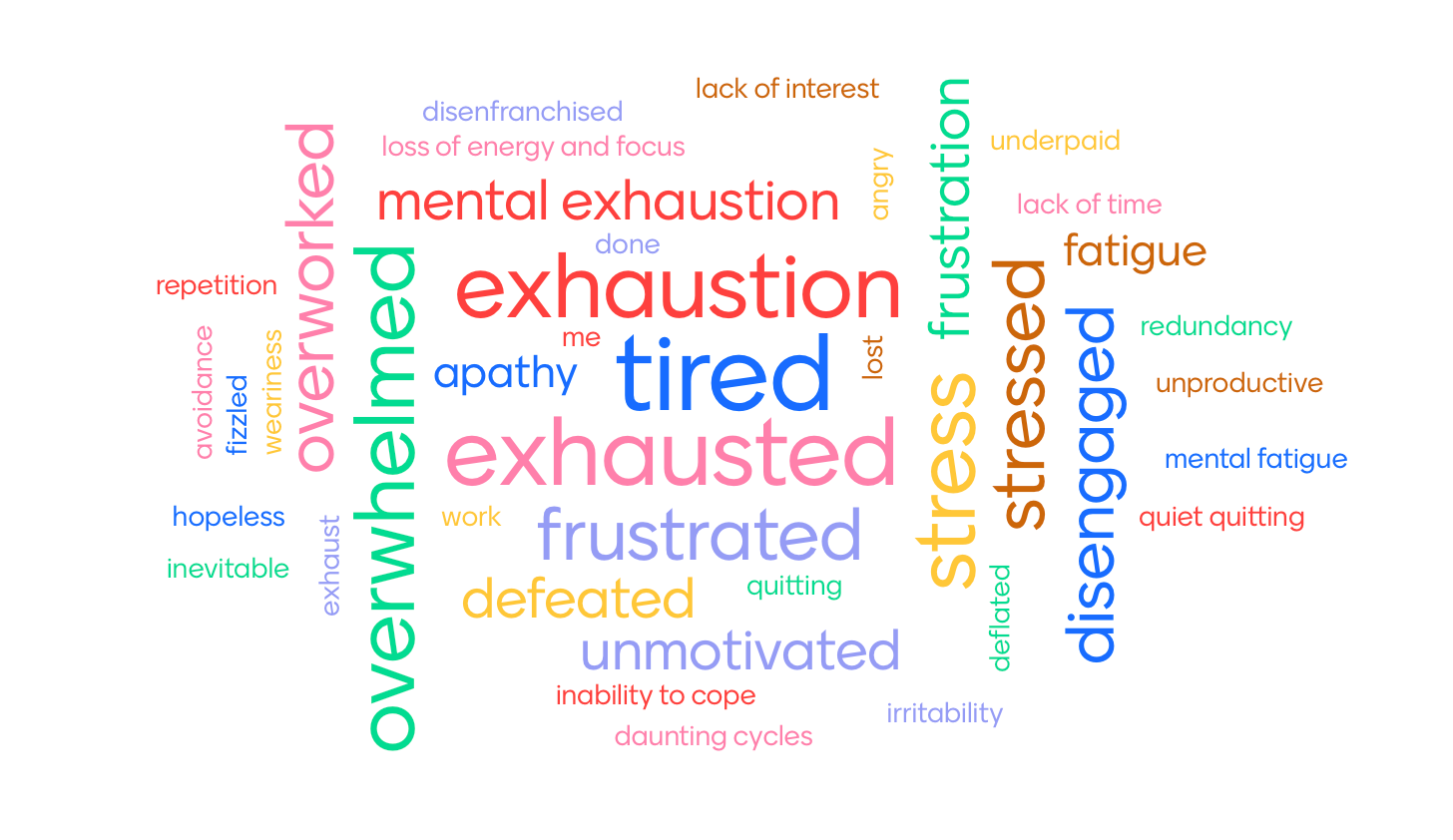
And when asked what feelings or emotions they associate with burnout, they said:
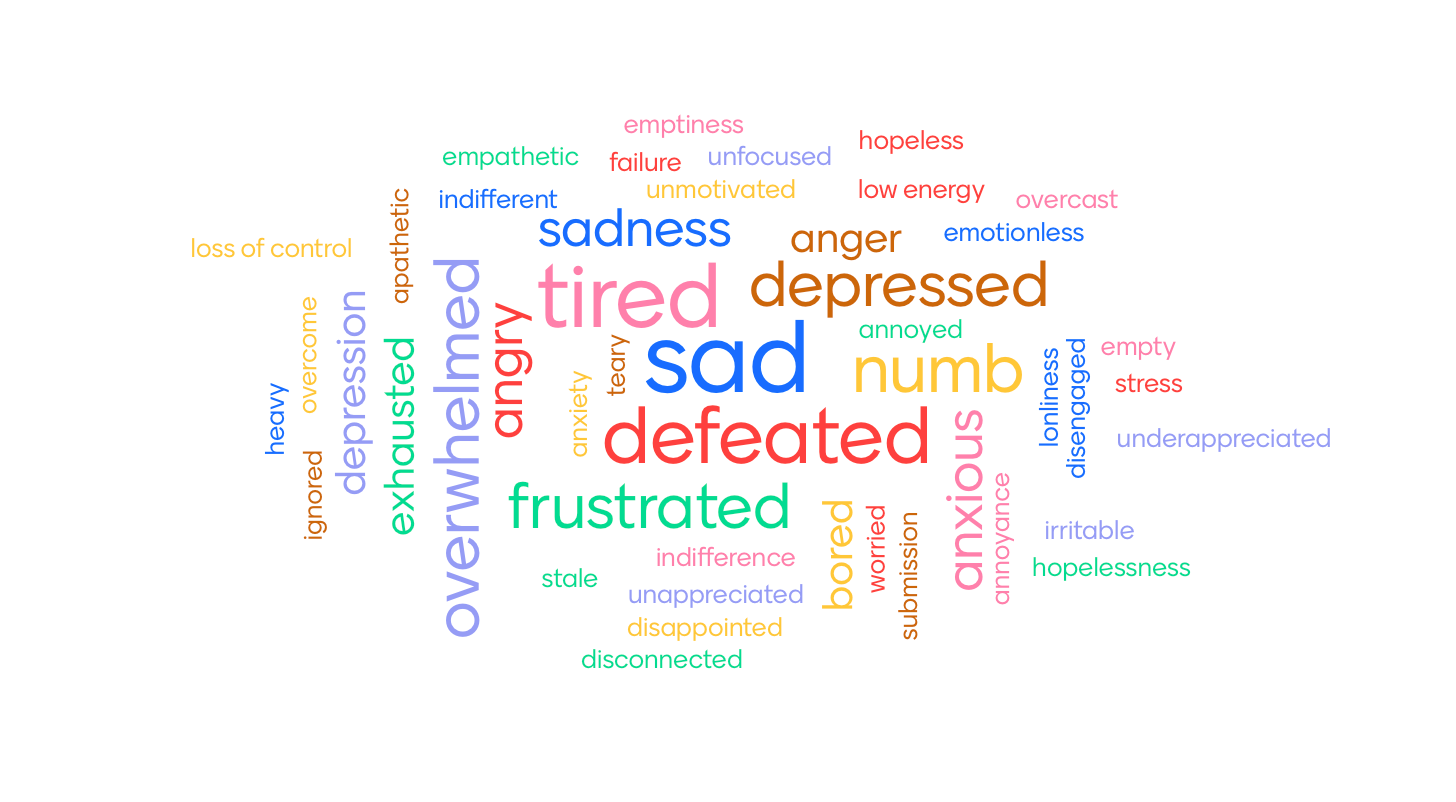
According to Burnout: The Secret to Unlocking the Stress Cycle by Emily Nagoski, PhD and Amelia Nagoski, DMA (a book I highly recommend), burnout is defined as:
1. Emotional exhaustion — the fatigue that comes from caring too much, for too long
2. Depersonalization — the depletion of empathy, caring, and compassion
3. Decreased sense of accomplishment — an unconquerable sense of futility: feeling that nothing you do makes any difference
Take a quiet moment to think about:
- Which of these three elements of burnout most resonate with you?
- A time in the last year where you felt this way at work.
We’ll come back to this in a moment. In the meantime, let’s turn to innovation. I asked the same two questions, starting with what word or words first come to mind when you hear the word innovation? This is what the group had to say:
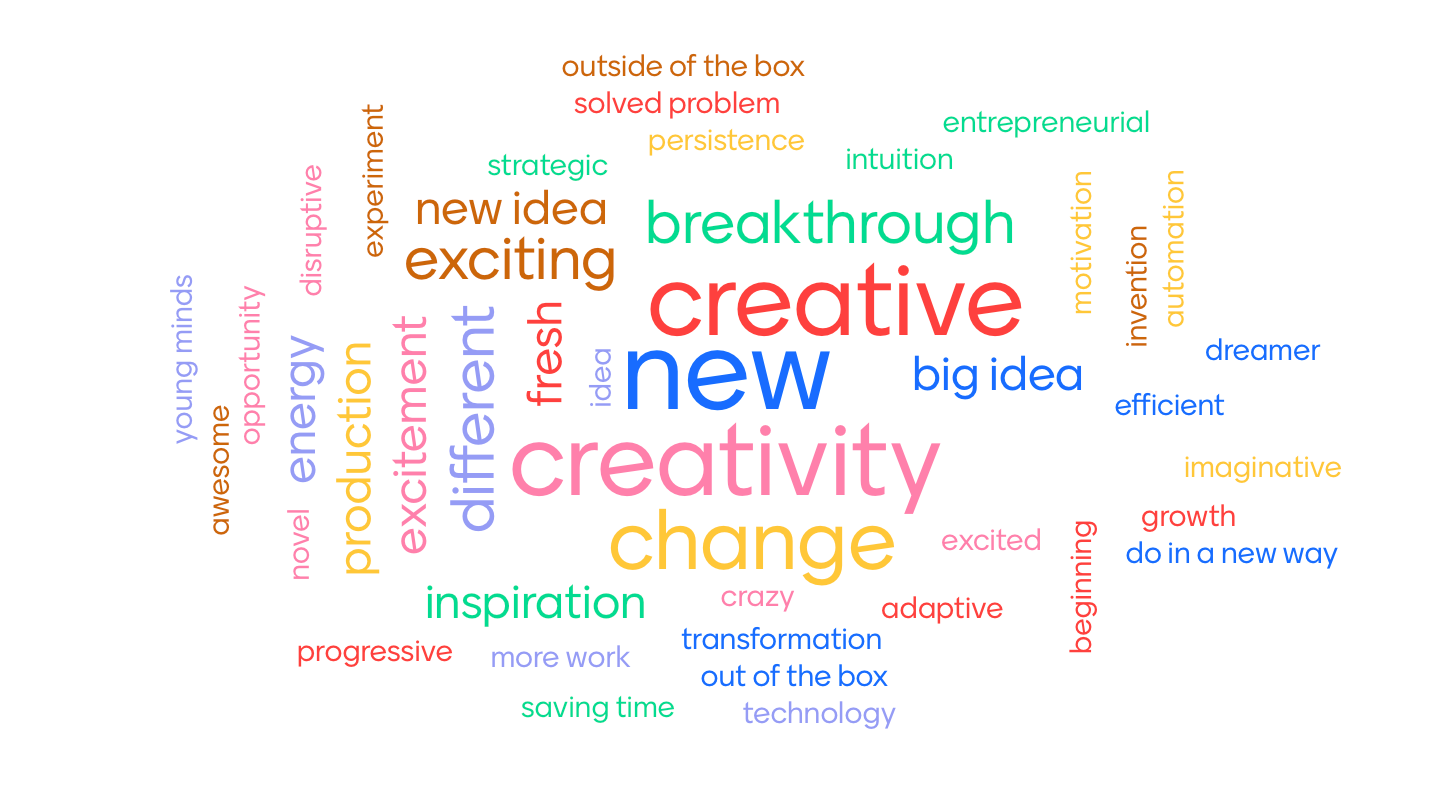
When asked what feelings or emotions they associate with innovation, they said:
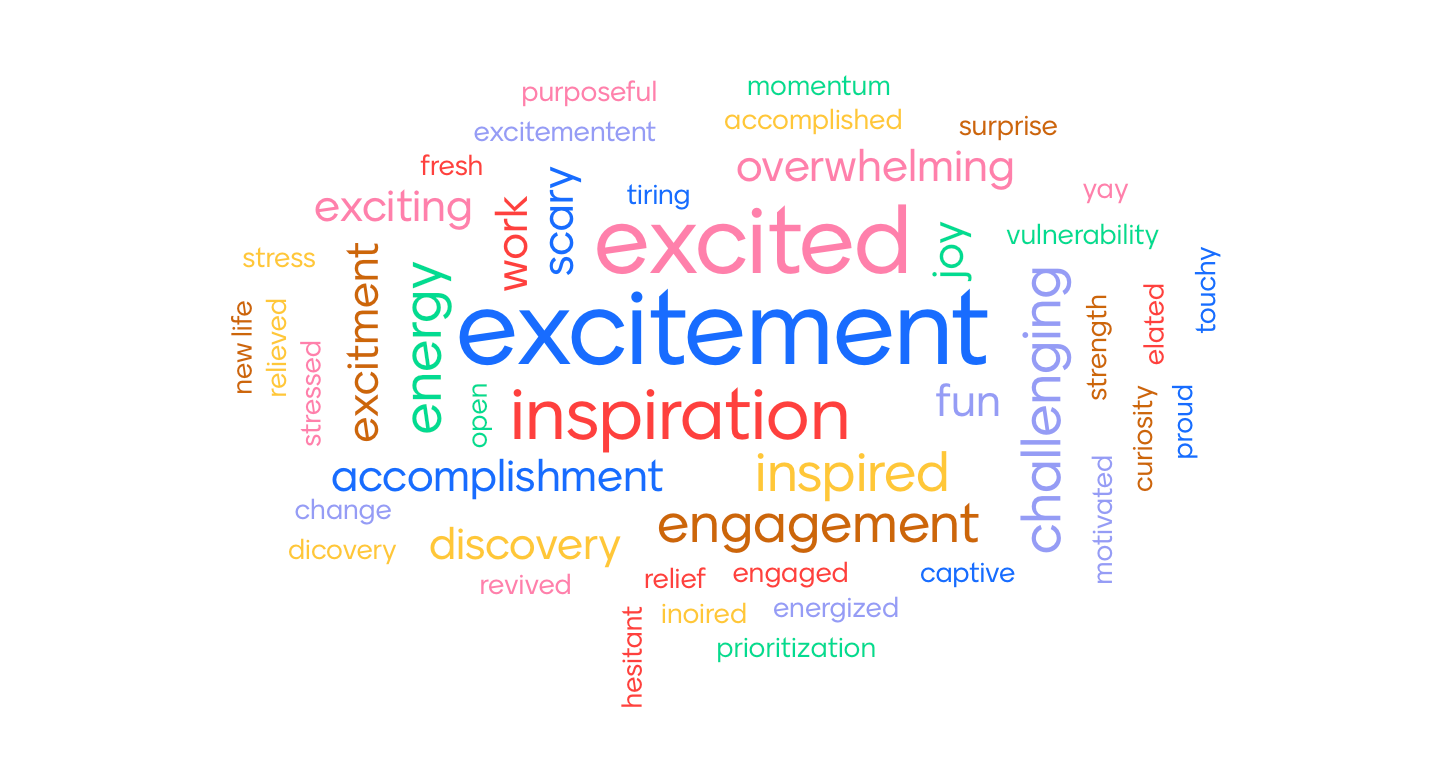
According to Innovate the Pixar Way: Business Lessons from the World's Most Creative Corporate Playground by Bill Capodagli and Lynn Jackson, innovation is defined as:
1. Top leadership who is totally enamored with and enchanted by innovation, and who expects the same from everyone in the organization, from the boardroom to the storeroom.
2. Frontline leadership who facilitates and encourages creative ideas from the entire team; a work environment that enables employees to quickly try new and innovative ways of doing their jobs, learn from their experiences, and try again.
3. Tangible measurements that are meaningful to the business process.
Take another quiet moment to think about:
- Which of these three elements of innovation most resonate with you?
- A time in the last year where you felt this way at work.
Now let’s take a look at the intersection between burnout and innovation. It’s interesting to note, for example, on Maslow’s Hierarchy of Needs that burnout is most likely to happen at the base of the pyramid when our most fundamental physiological needs aren’t met. Additionally, innovation is most likely to happen at the top of the pyramid only after the remaining four tiers of needs have been met.
The conclusion I’ve drawn here is that when we are burned out, our ability to innovate screeches to a halt. Think about your own work. Is this your experience?
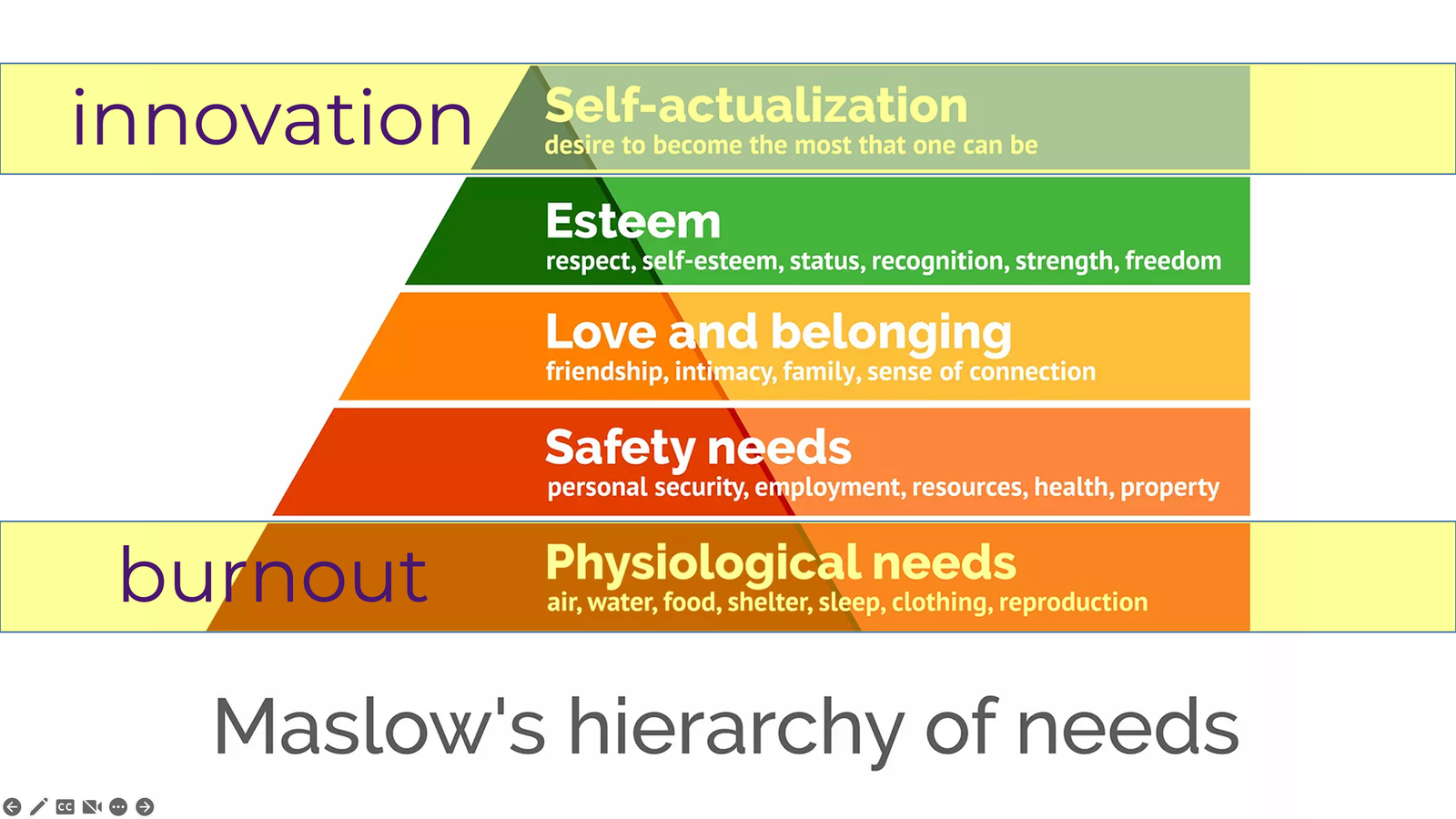
For the purposes of this discussion, let’s consider the lens of meetings and events. It’s common practice after one conference concludes for the staff (including me!) to simply run to the next and not look back. After all, there are more deadlines to meet, participants to register, meals to order, and A/V to confirm. I often call this the Roadrunner Syndrome.
When this happens, we fail to collect and leverage a lot of valuable information. We don’t take the time to individually self-reflect on the event’s strengths/weaknesses nor do we complete a full after action review with the team, let alone review, aggregate, and apply the participant evaluations/feedback and/or focus groups insights.
Instead of making positive changes to future events, we default to the way it’s always been done before. Although most of us really do care about continuous quality improvement, it’s usually just easier to follow last year’s blueprint. Moreover, this means we don’t have to expend the extra energy with our colleagues and members to navigate the change management process.
But we do our organizations a disservice in the long run — they become bored with the same old program. Our sponsors and exhibitors become disinterested because they’re not seeing the same value they once did. Ultimately, over time, revenue begins to decline (often a little at a time, sometimes even imperceptible at first, but it eventually adds up year over year).
And for those of us who can’t help but make waves and go the extra mile to better serve our key audiences, that compounds our workload exponentially. We’re trying to justify changes, help paint a picture for the new/reimagined program elements, and align resources, all while being short on time, understaffed, and/or lacking key leadership support.
In this post-pandemic meeting/event planning environment, it’s no wonder the very real effects of change, stress, and mental health concerns are once again surfacing. Consider the following realities:
- Increased change (e.g., new technology platforms to support remote/hybrid programs, a revolving door of hotel contacts, and significant internal staff turnover)
- Increased stress (e.g., less applicable event history, fewer events but the same or higher revenue expectations, and shorter planning windows/venue response times)
- Increased mental health concerns (e.g., anxiety/panic attacks, eating/sleeping irregularities, and isolation/loneliness)
In support of less employee burnout and greater innovation, following are a handful of strategies for you and your teams to consider and try.
- When it comes to change management:
- Have clarity of purpose and objectives (tap into your inner Simon Sinek and start with why)
- Recruit/develop powerful change leaders at every level of your organization
- Anticipate and address obstacles to the so-called implementation gap
- When it comes to stress management, consider what it might look like to more regularly complete the stress cycle (a key topic addressed in Burnout with excerpted recommendations below):
- Physical activity. It's not just about going to the gym. Dancing counts. Jumping jacks in your studio apartment are fine. Running; swimming; even stomping your feet and screaming or punching your pillow into oblivion. All of these work. The point is you have to use your body. Since stress is physical, physical activity is a big part of ending stress cycles.
- Creativity. Make something. Do you like to knit, paint, sing, write, or play with modeling clay? Whatever creative endeavor speaks to you, do it.
- Laughing. Especially when you can laugh together with someone, laughter is a way to release and express all the emotions we’re keeping inside. Emotions are like tunnels. If you go all the way through them, you get to the light at the end. Laughter helps with this, as does recalling a funny story that made you laugh.
- Crying. Crying is for everybody. Babies cry because it’s good for them, but it’s good for adults, too. Crying is one of our body’s mechanisms to release stress. It’s important not to be so embarrassed by our tears that we attempt to stop them from coming out.
- Physical affection. You don’t have to have a romantic partner, just someone you feel safe with to give you a long, strong hug (about 20 seconds according to the research) or time with a loving pet. Physical affection helps your body release trust and bonding hormones like oxytocin, and those can chase away the sense of danger your body was previously holding onto. As our hormones shift, our heart rate slows and our body begins to feel safe.
- Deep breathing. Find a breathing tool that resonates with you. Here's a simple one: breathe in slowly for five seconds, hold that breath for five more seconds, and exhale for ten seconds. Just a few minutes of this practice can calm down your vagus nerve and complete your fight-or-flight stress response.
- Finally, when it comes to mental health management, consider movement, meditation, making a concerted effort to see/engage with other people, engaging a licensed professional, and/or exploring prescription medication.
If you or your team has an idea or resource to add to this conversation about burnout and innovation, please share with us your tips, tricks, and recommendations using the comments below or by emailing us at [email protected].


